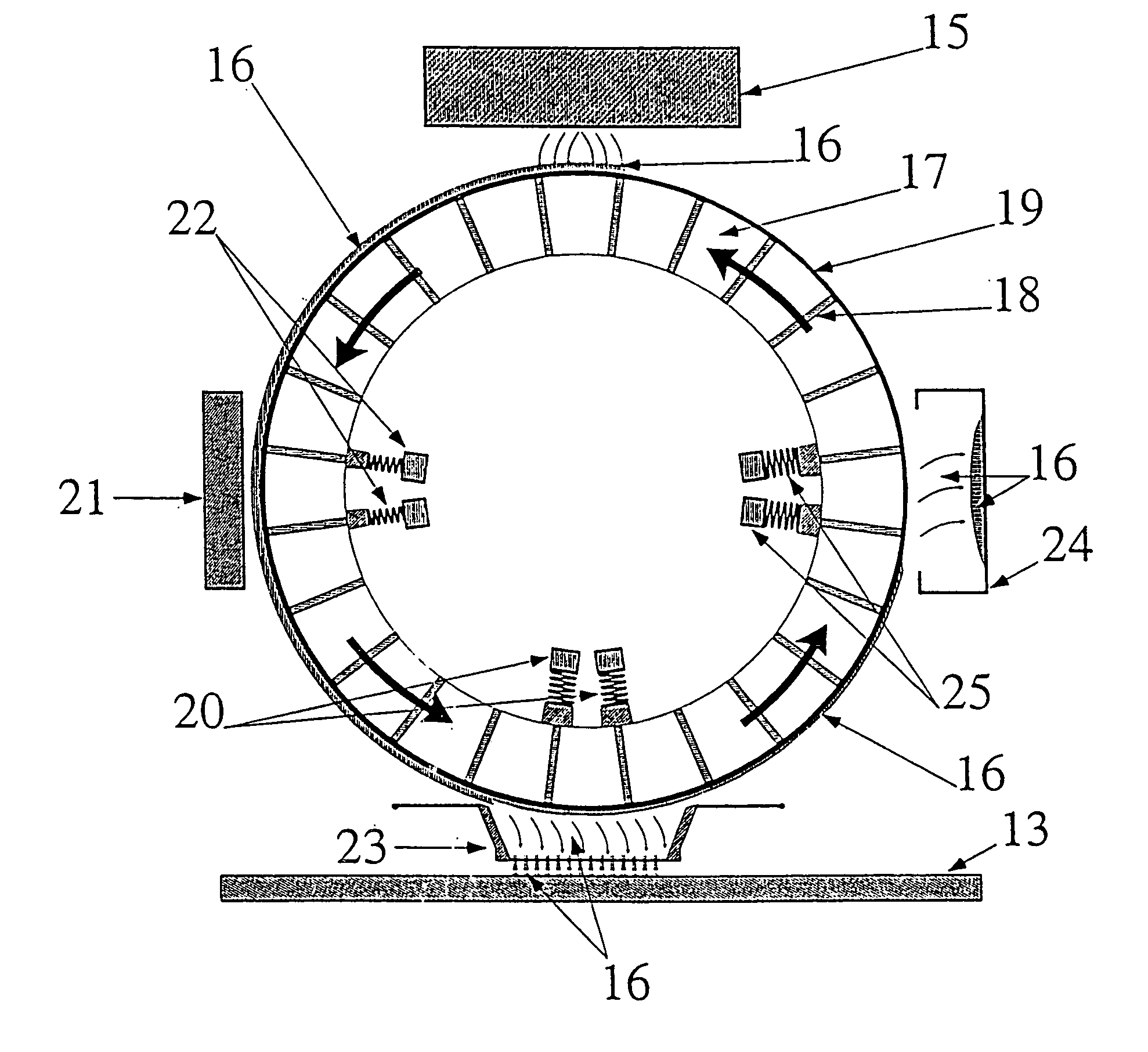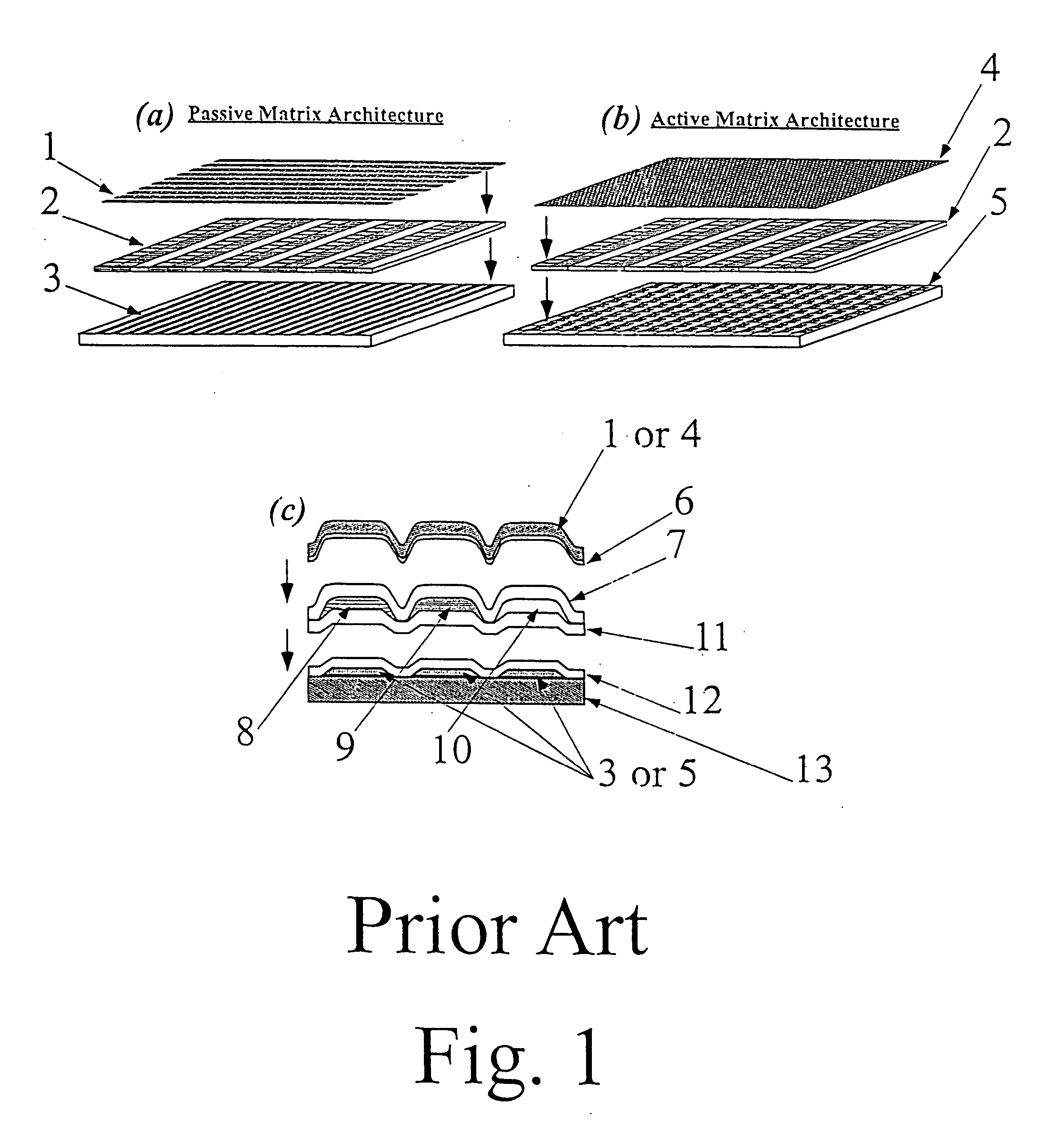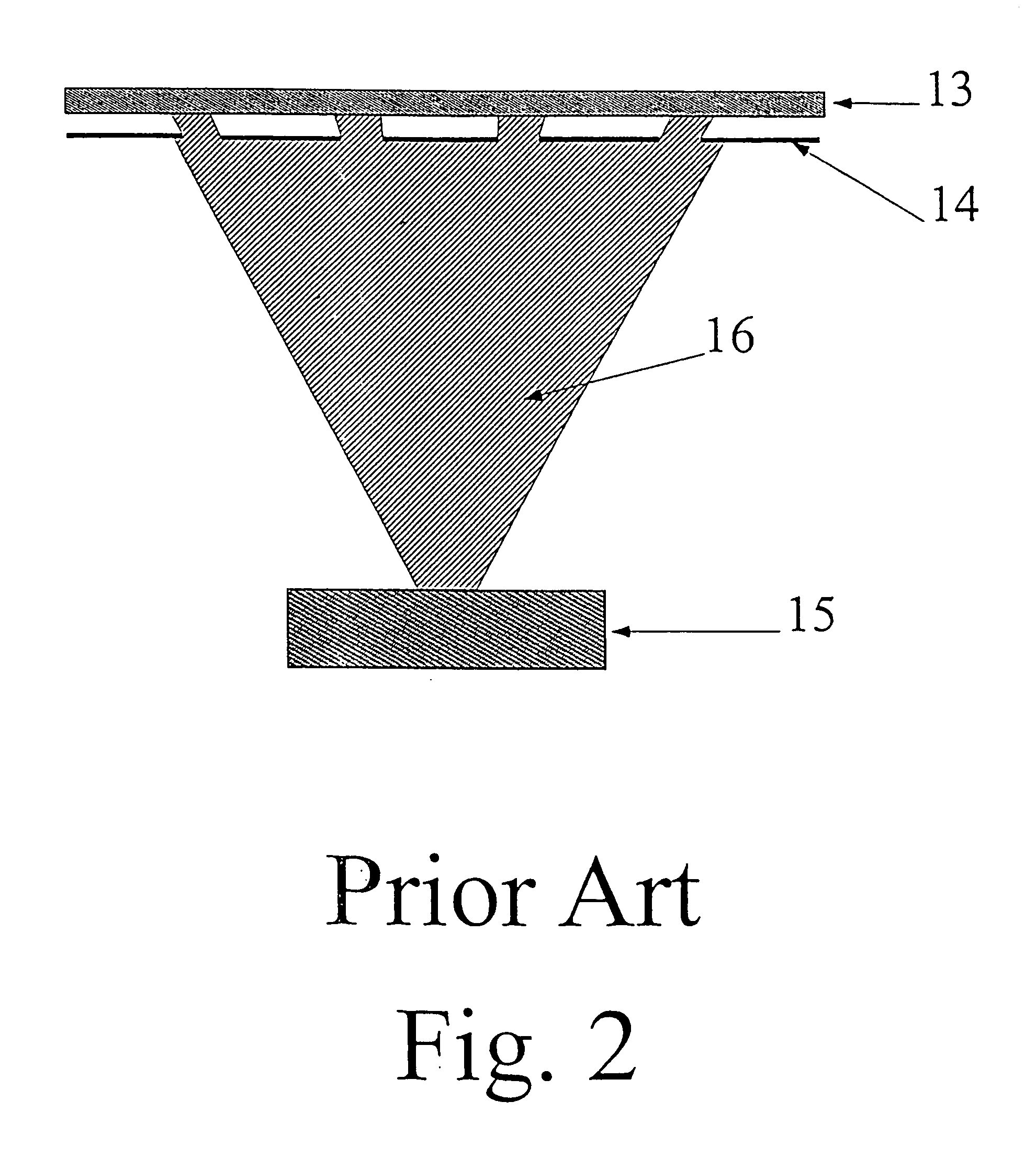Single-pass growth of multilayer patterned electronic and photonic devices using a scanning localized evaporation methodology (SLEM)
- Summary
- Abstract
- Description
- Claims
- Application Information
AI Technical Summary
Benefits of technology
Problems solved by technology
Method used
Image
Examples
Embodiment Construction
[0030]FIG. 3 depicts schematically the Scanning Localized Evaporation Methodology (SLEM) process for depositing thin films onto substrates, which are placed in close proximity to the deposition source. A thin film deposition cycle begins at the loading station, where evaporation of a sublimable material commences on to an array of heater elements. The heater elements are mounted on a first transport mechanism. The thickness of the deposited film on a selected heating element can be determined at the monitoring station, when this heating element is positioned opposite to the monitoring station by the first transport mechanism. The same transport mechanism also brings the loaded heating elements to the deposition site. Here, the thin film is re-evaporated and deposited through a mask onto a substrate. The substrate is mounted on a second transport mechanism that provides the means to move and index it relative to the mask. In the case where the substrate is larger than the mask patter...
PUM
| Property | Measurement | Unit |
|---|---|---|
| Temperature | aaaaa | aaaaa |
| Circumference | aaaaa | aaaaa |
| Electrical resistivity | aaaaa | aaaaa |
Abstract
Description
Claims
Application Information
 Login to View More
Login to View More - R&D
- Intellectual Property
- Life Sciences
- Materials
- Tech Scout
- Unparalleled Data Quality
- Higher Quality Content
- 60% Fewer Hallucinations
Browse by: Latest US Patents, China's latest patents, Technical Efficacy Thesaurus, Application Domain, Technology Topic, Popular Technical Reports.
© 2025 PatSnap. All rights reserved.Legal|Privacy policy|Modern Slavery Act Transparency Statement|Sitemap|About US| Contact US: help@patsnap.com



